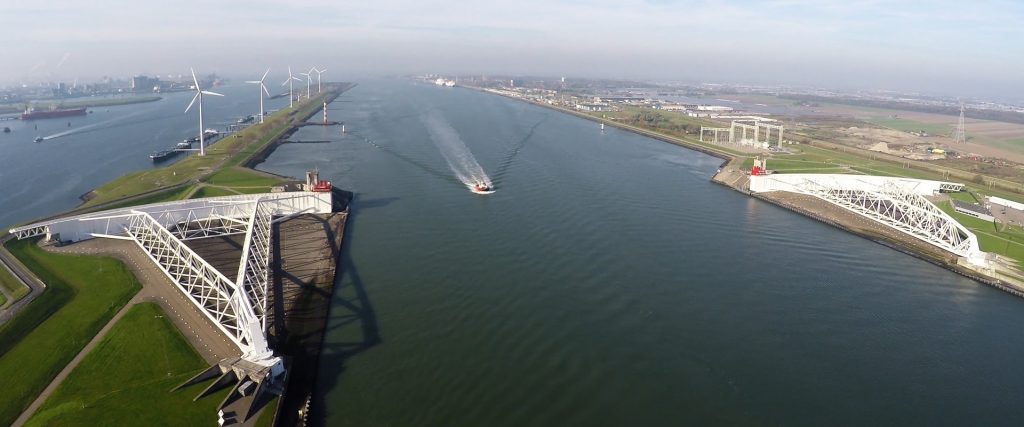The Cost-Benefit Analysis (CBA) plays an outsized role in the evaluation of investment projects. This prominence—I feel—is not justified for water projects. Specifically, not for integrated water projects.
A few arguments to support this statement.
Beneficial assembly
Individual water projects should not be reviewed—or designed—in isolation. Infrastructure elements are typically connected to others, and these connections provide benefits. The emerging properties of this assembly—which are dynamic and change in time—usually exceed the benefits of the individual projects. This is illustrated with the example of Owen Falls Dam.
| Emerging Properties: The Case of Owen Falls Dam at the Outlet of Lake Victoria Owen Falls Dam was completed in 1954 for the sole purpose of hydropower production. The dam controls the outflow of Lake Victoria and therefore determines the hydrological regime of the White Nile. The original power station had a capacity of 150 MW and was operated as a ‘run-of-the-river’ system following the natural outflow of Lake Victoria. Many things have changed since 1954. A series of hydropower facilities—with total capacity exceeding 1000 MW—has been constructed on the Victoria and Kyoga Nile. Lake Victoria is the principal reservoir for this cascade of hydropower projects, and Owen Falls Dam (now called Nalubaale) functions as the ‘central release valve’ for this system (in conjunction with Kiira Dam). Further, Lake Victoria release policies no longer follow a ‘run-of-the-river’ regime. Rather, they are based on multiple objectives including long-term power optimization and flood control, among others. In addition, operation rules of Owen Falls Dam can assist in flood mitigation and seasonal wetland management in the downstream Sudd area—in South Sudan—for the benefit of the pastoralist people living in this area, while maintaining environmental integrity. Moreover, new functions for Owen Falls Dam are emerging. The flexibility of hydropower facilitates combining it with solar power, which is abundant in Uganda. In this setup, Lake Victoria would serve as a giant ‘virtual battery’ for photo-voltaic power. Thus, a CBA for Owen Falls Dam in 2021 would differ radically from one in 1954. The beneficial assembly that gradually emerged after 1954 was not taken into consideration—how could it be? But these cumulative benefits—for sure—would not have materialized had the dam not been built. |
There are many examples of (unexpected) beneficial assemblies: an irrigation scheme connected to a sugar mill connected to an improved road network connected to out-grower schemes; a road serving as a water harvesting feature that enhances groundwater recharge connected to a (small-scale) supplementary irrigation scheme, etc.
Water infrastructure that is part of a beneficial assembly typically outlasts its intended lifetime—often by a lot; it means that the benefits extend much further in the future than the costs, and that the accumulated benefits are (much) higher than originally foreseen.
General limitations of a CBA
Other criticism of the CBA is more general. As is widely documented, a CBA does not provide a neutral tool to evaluate an investment because:
- it is based on numbers that can be customized
- is biased (the analyst decides which variables and data to omit or include)
- can therefore be gamed
- is bad at quantifying risks
- only considers monetary and economic criteria
- does not include values or benefits that cannot be defined in monetary terms (e.g. environmental, cultural, ethical, etc.)
- only considers ‘first-order’ costs and benefits, and
- has difficulties with a dynamic (and unpredictable) future.
A CBA will probably work well for simple, one-dimensional projects, with tightly defined boundaries. Its value is more questionable for complex (integrated) water projects.
Options & least maintenance
An alternative approach would start with avoiding isolated water projects. Value (potential) interconnections. Follow the ‘precautionary principle’. Adopt Bill Mollison’s adage: “the elements we design should last as long as possible and take least maintenance” (Permaculture Design Manual).
For many countries this makes sense because:
- funds for investments can often be mobilized (through political urgency or a project)
- but funds for maintenance & operation are much harder to find year in year out.
Recognize that redundancies—which are eliminated as ‘waste’ when monetary considerations dominate—provide “options” that create resilience in an uncertain climate & world.
“optionality is a substitute for full understanding; Nicholas Nassim Taleb”

The precautionary principle in action: The Maeslant Barrier
In the early 90s, I worked as a junior design engineer on the storm-surge barrier for Rotterdam Harbor. The design followed a probabilistic approach that quantified all potential failure mechanisms with the objective to optimize all structural elements and have uniform reliability. And, of course, to control costs. It was a sophisticated process that fine-tuned all design elements—from the biggest to the smallest.
When we were done, a decision was taken by ‘management’ to increase the height of the barrier by a full meter to accommodate the potential impacts of climate change. Note: this was in the early 1990s. So much for probabilistic design!
I do not know who made this decision, but he was a wise man (in those days, everybody in civil engineering was a man….) with foresight (and probably courage); and he sensibly ignored the CBA.
Reference: Frank Ackerman; Critique of Cost-Benefit Analysis, and Alternative Approaches to Decision-Making (2008)
